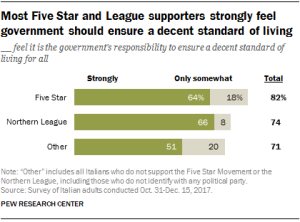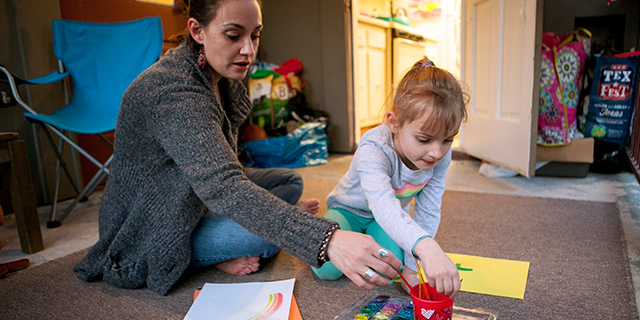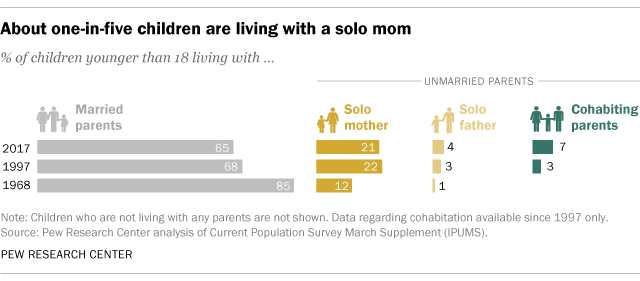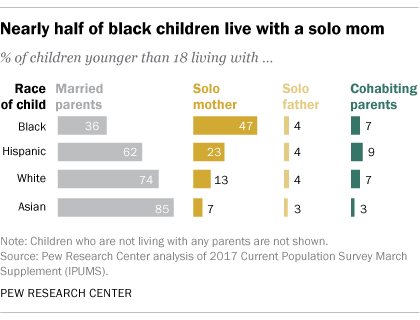

The share of U.S. children living with an unmarried parent has more than doubled since 1968, jumping from 13% to 32% in 2017. That trend has been accompanied by a drop in the share of children living with two married parents, down from 85% in 1968 to 65%. Some 3% of children are not living with any parents, according to a new Pew Research Center analysis of U.S. Census Bureau data.

Most children in unmarried parent households are living with a solo mother, but a growing share are living with cohabiting parents. Overall, about one-in-five children (21%) are living with a solo mother, up from 12% in 1968. Some 7% are living with cohabiting parents, about double the share that were doing so in 1997 (the first year for which census data on cohabitation are available). The share of children living with a solo father has ticked up, and stands at 4%, up from 1% in 1968. (In this analysis, children are classified based on the parent with whom they live most of the time. Children who split their time equally between households are classified based on which household they were in at the time of the data collection.)
All told, 24 million U.S. children younger than 18 are living with an unmarried parent. Most (15 million) are living with a solo mother. In comparison, 5 million live with cohabiting parents and 3 million live with a solo father. In 1968 – the first year for which these data are publicly available – 9 million children were living with an unmarried parent, 8 million of whom had a solo mom.
The rise in U.S. children living with either cohabiting or solo parents is due in part to long-term declines in marriage, as well as increases in births outside of marriage. But the likelihood of a child – even one born to two married parents – spending part of their childhood in an unmarried parent household is on the rise. Increases in divorce mean that more than one-in-five children born within a marriage will experience a parental breakup by age 9, as will more than half of children born within a cohabiting union.

The share of children who are living with an unmarried parent varies by race and ethnicity. More than half (58%) of black children are living with an unmarried parent – 47% with a solo mom. At the same time, 36% of Hispanic children are living with an unmarried parent, as are 24% of white children. The share of Asian children living with unmarried parents is markedly lower (13%).
The type of family arrangement a child lives in is associated with a household’s economic situation. A recent Pew Research Center analysis found that 30% of solo mothers and their families are living in poverty compared with 17% of solo father families and 16% of families headed by a cohabiting couple. In comparison, 8% of married couple families are living below the poverty line.